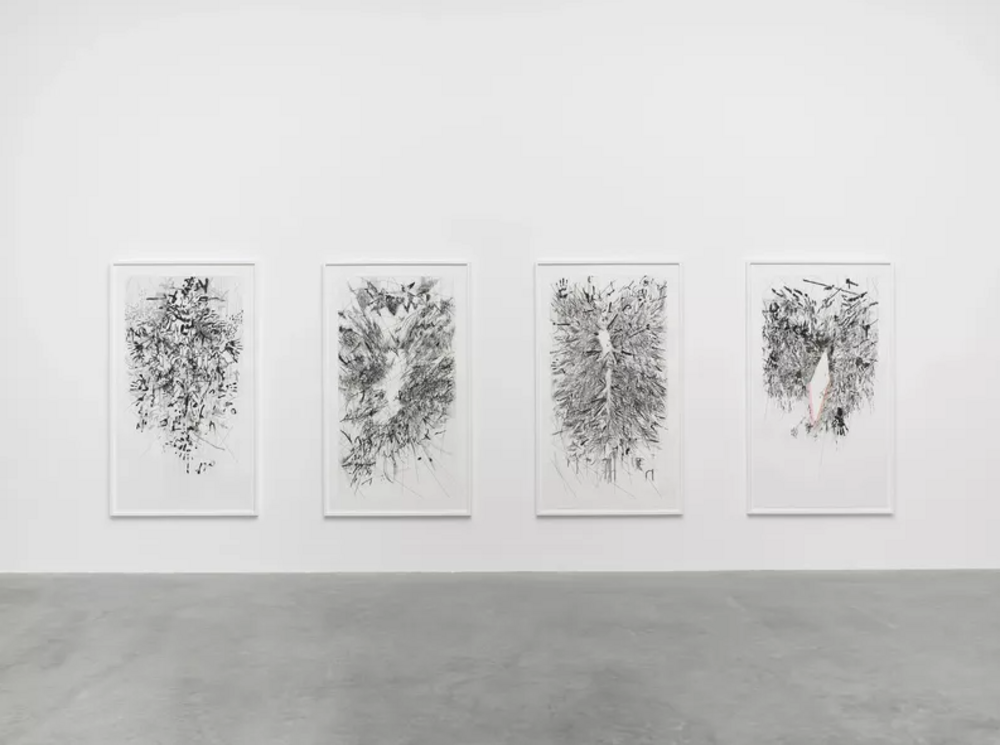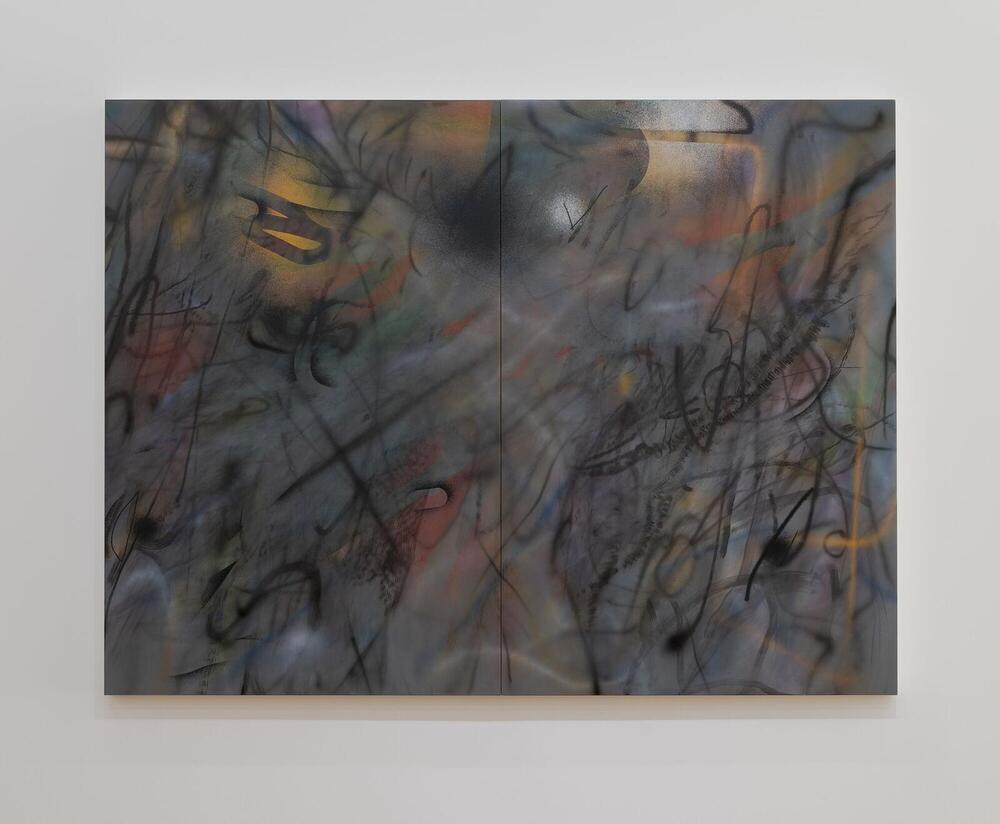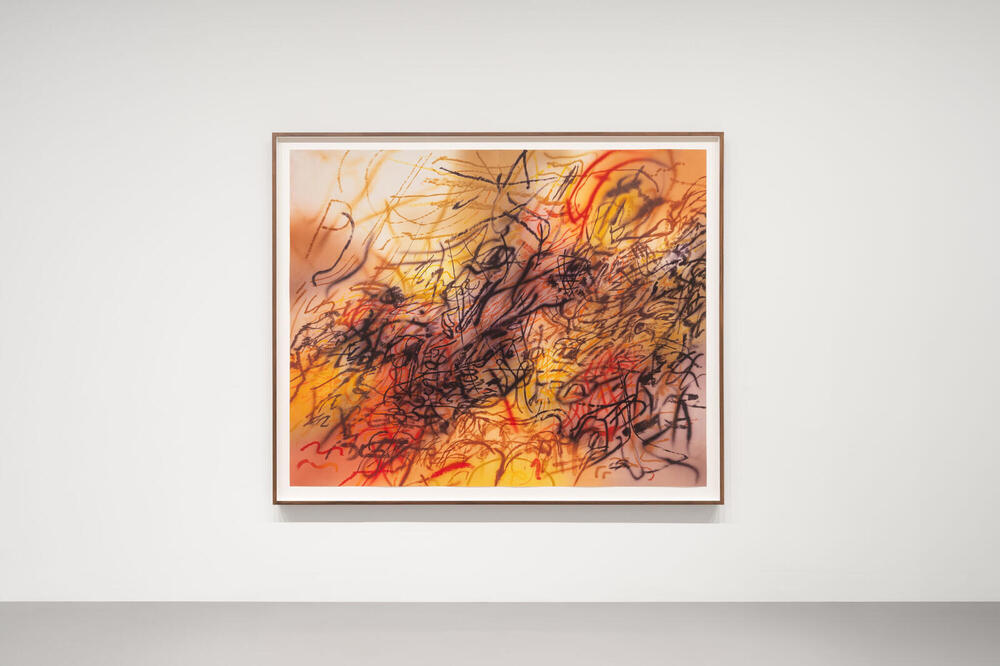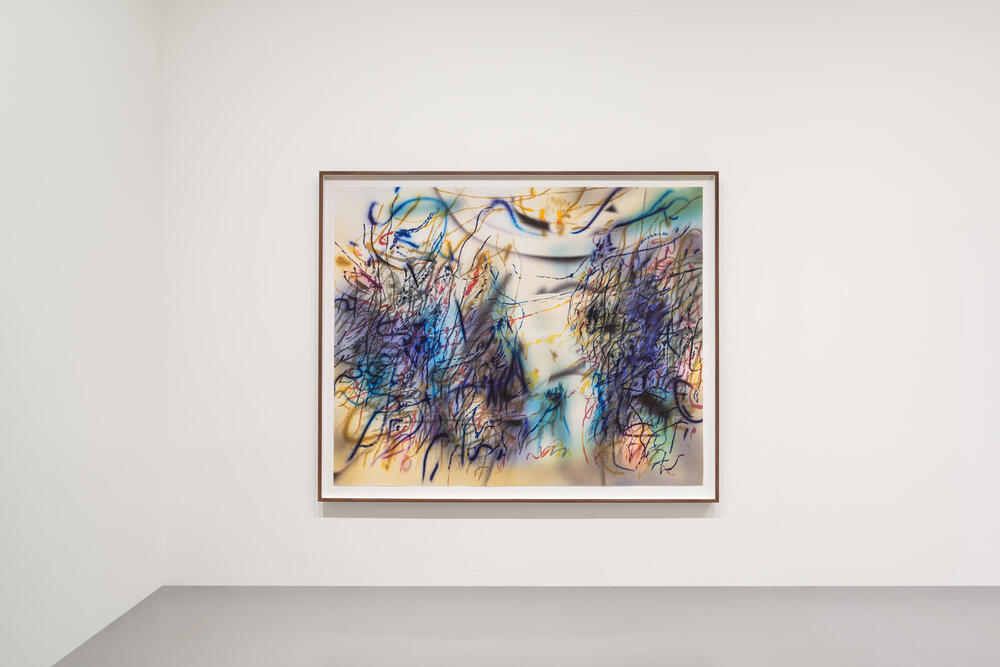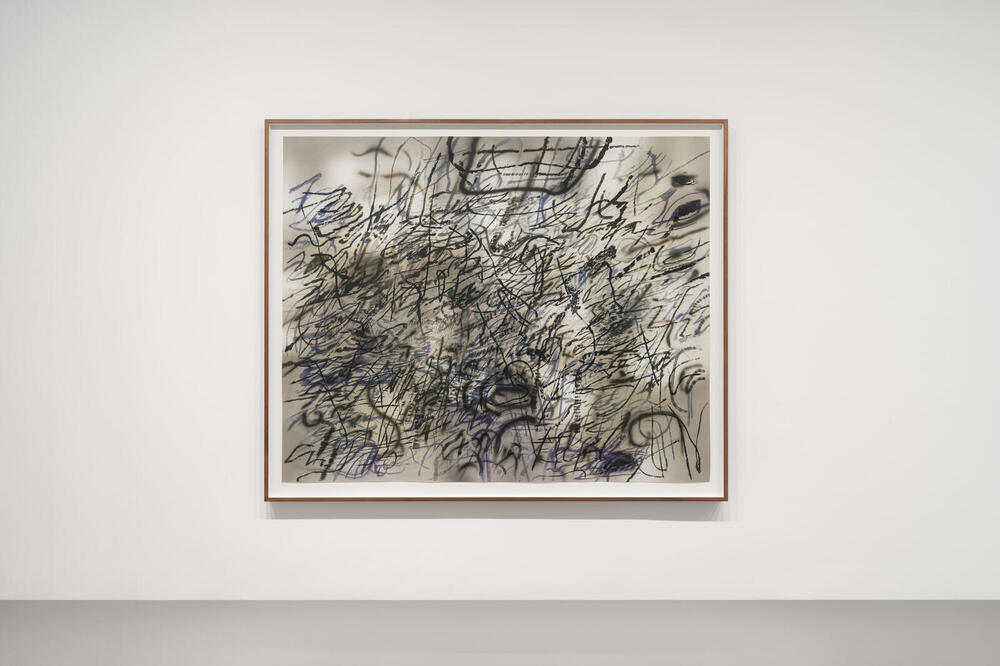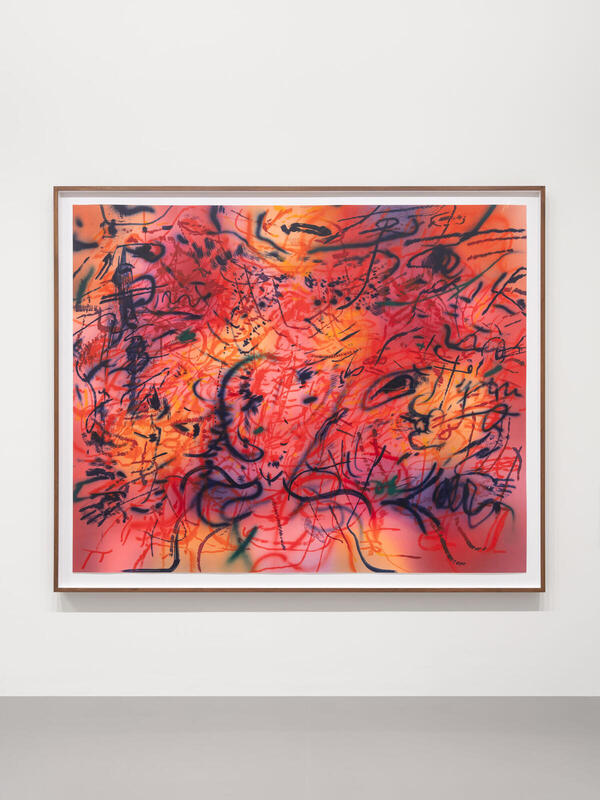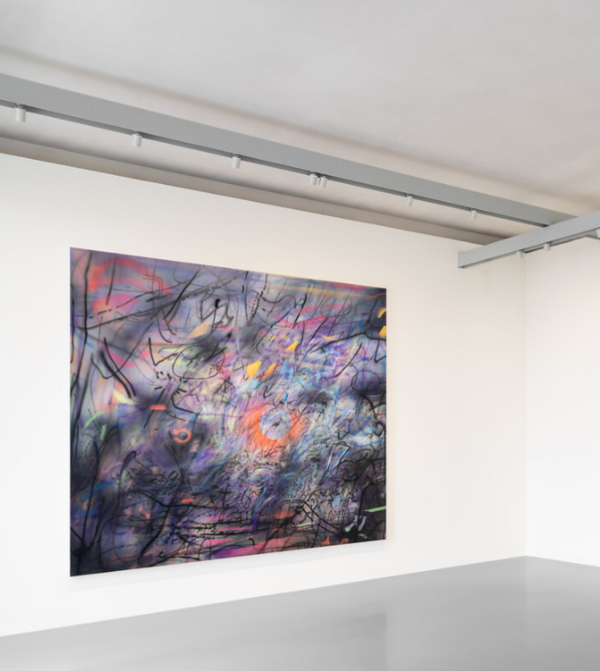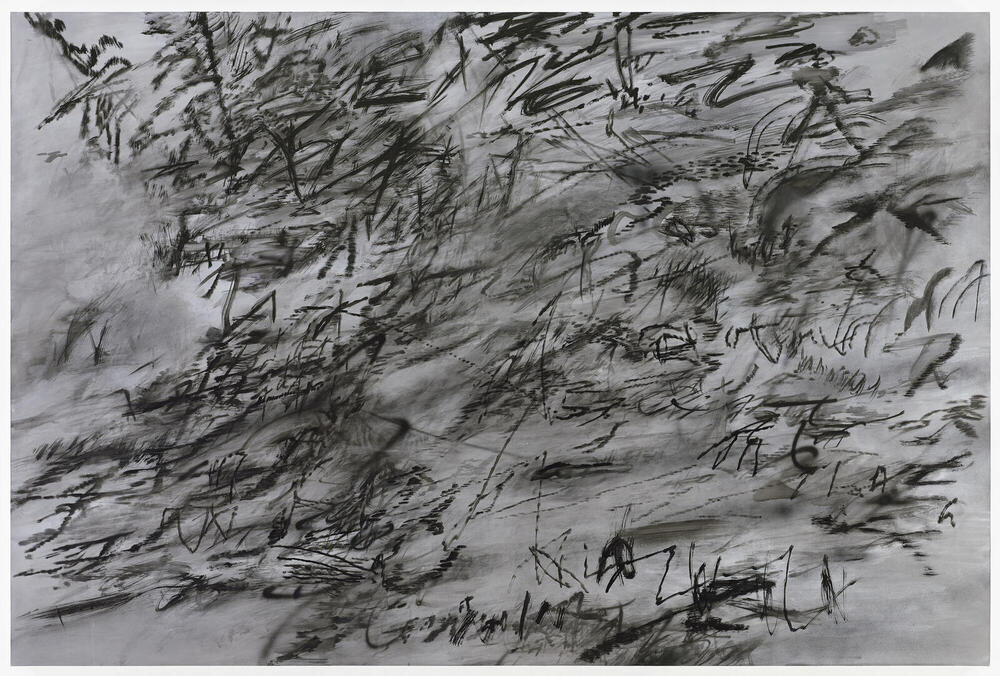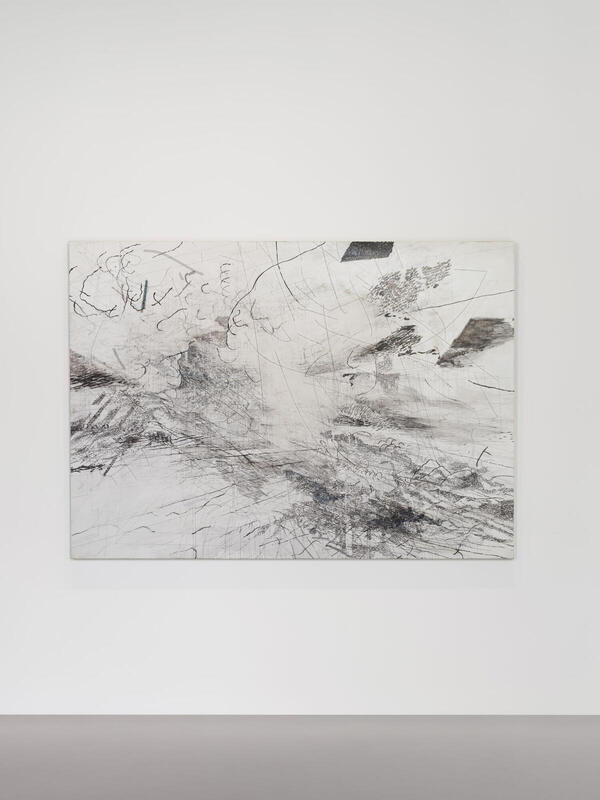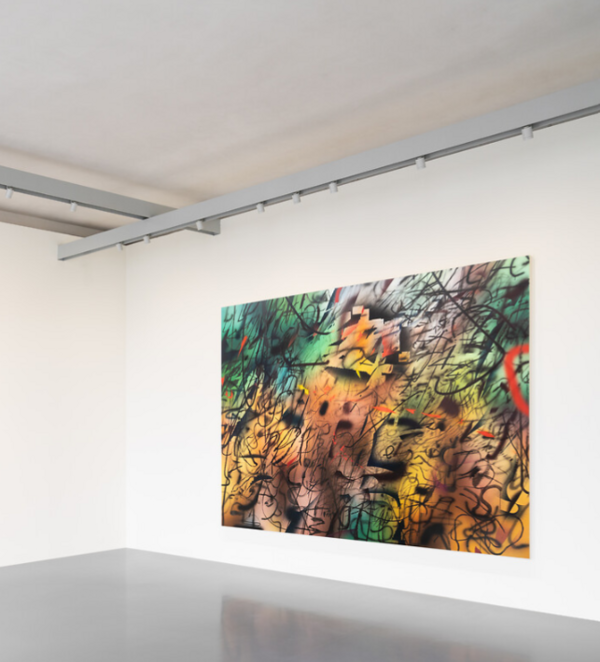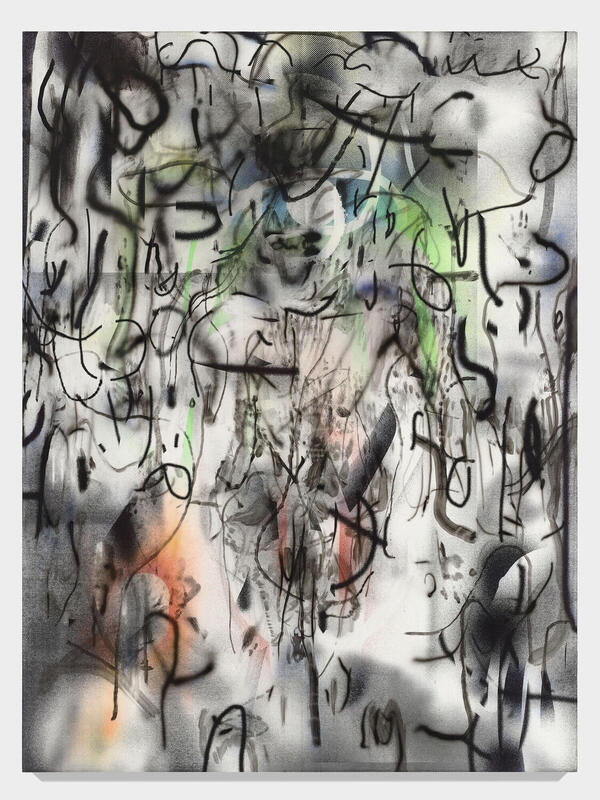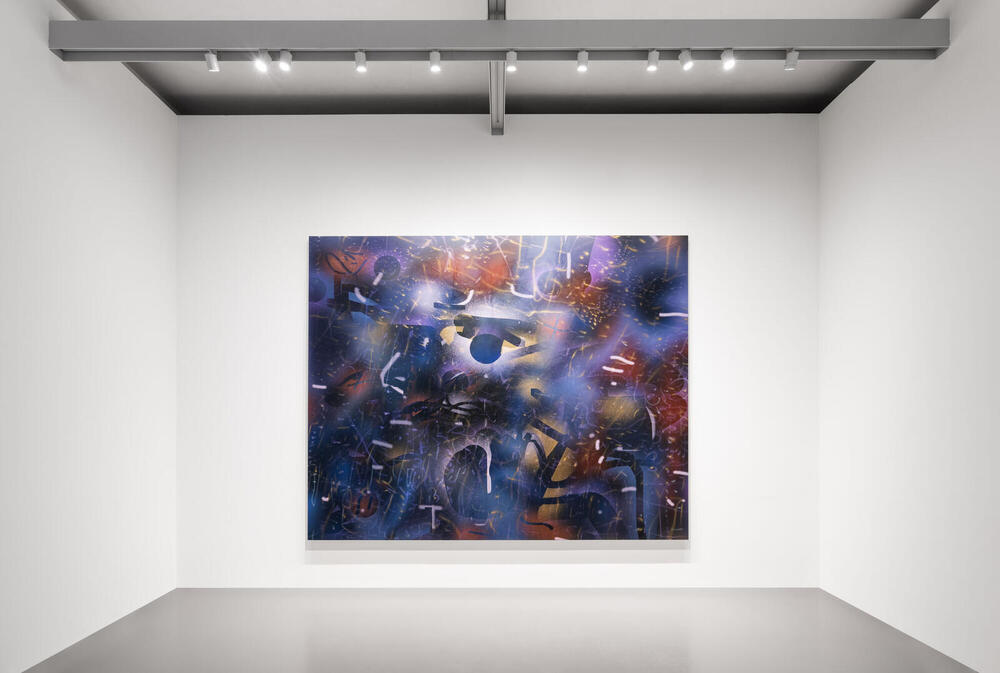Conjured Parts (Epigraph), Aleppo
Ink and acrylic on canvas
152,4 x 182,9 cm
Starting in 2016, Ethiopian-American artist Julie Mehretu began incorporating reworked press photographs into her canvases—blurred, cropped, enlarged, and flipped—pushing them to the edge of legibility. These images replaced the architectural lines and atmospheric swarms that had previously structured the backgrounds of her works. By using digital editing tools such as Photoshop, Mehretu retains only the “DNA” of these images, which she then transfers to canvas through projection and airbrushing.
For Conjured Parts (Epigraph), Aleppo, Mehretu used a 2013 photograph showing the city of Damascus under bombardment. In the ruins of a building, a Free Syrian Army soldier stands with his back to us, weapon in hand. The processed image, no longer readable in its original informational content, remains visible as luminous halos in which the human figure nearly dissolves. These visual sources, diverted and reappropriated, are pushed, in the words of art historian Adrienne Edwards, “to the furthest edges of opacity, illegibility, and withdrawal.” Over this base layer, the artist then applies an entanglement of gray and black marks. The Conjured Parts series (2015–2017) marks a major turning point in Mehretu’s practice: the canvas becomes inhabited by shadows and ghosts, and the painting is infused with a sense of vulnerability and anxiety in response to current global events. Artist Glenn Ligon has described the series as the beginning of a new language that combines “writing, pictography, dedication, and imagination.”
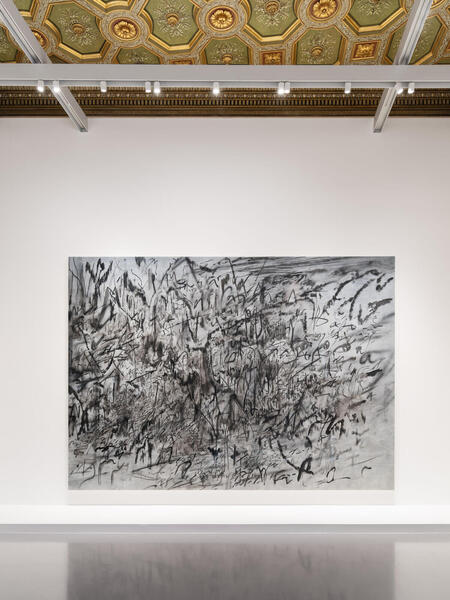
Installation view, “Julie Mehretu. Ensemble”, 2024, Palazzo Grassi, Venezia. Ph. Marco Cappelletti © Palazzo Grassi, Pinault Collection
